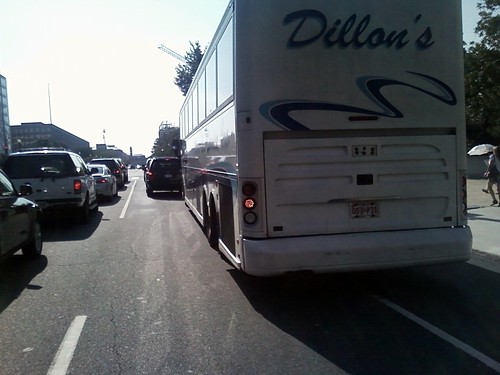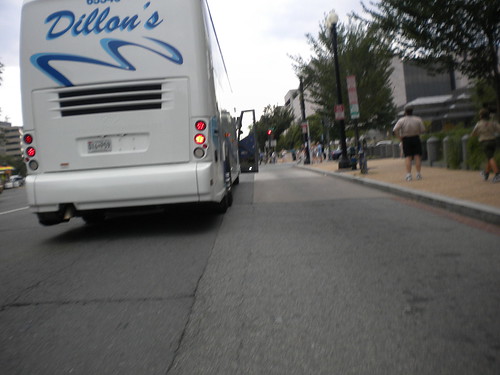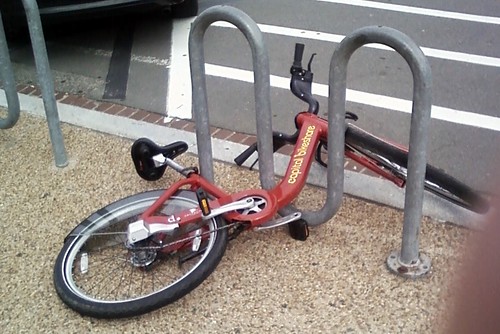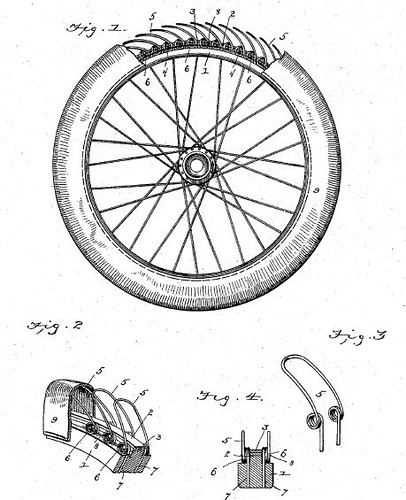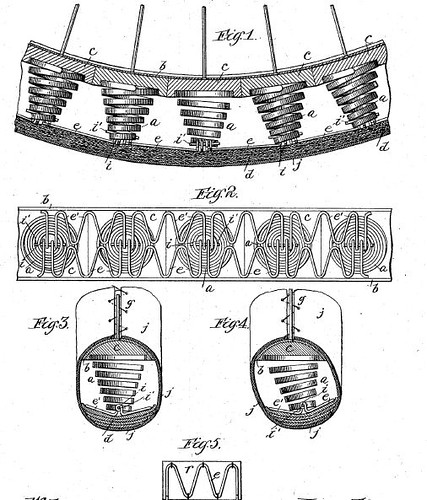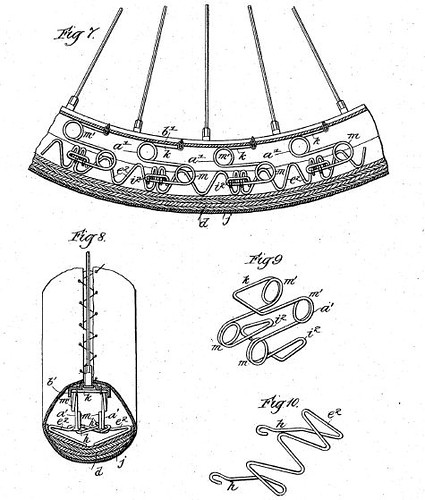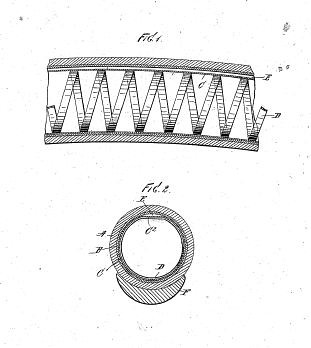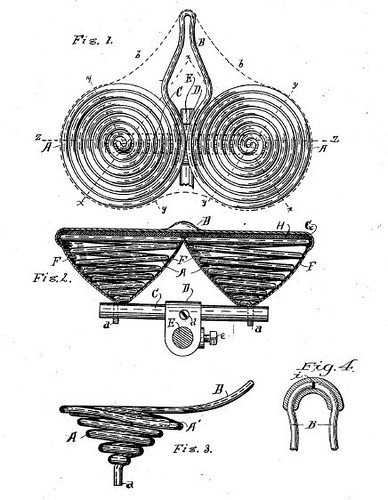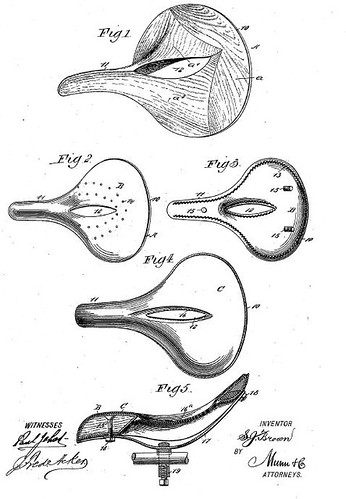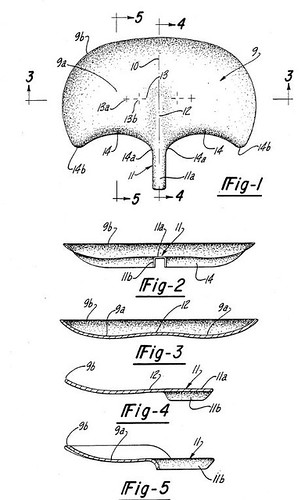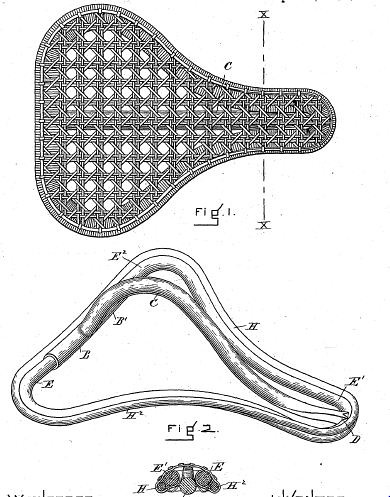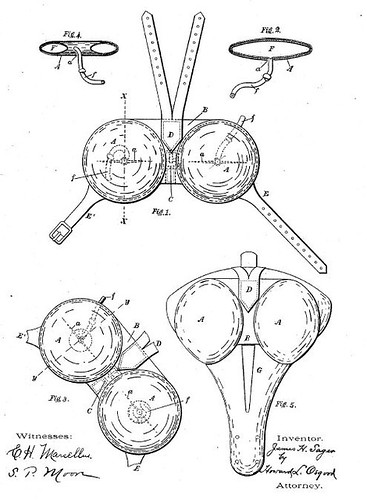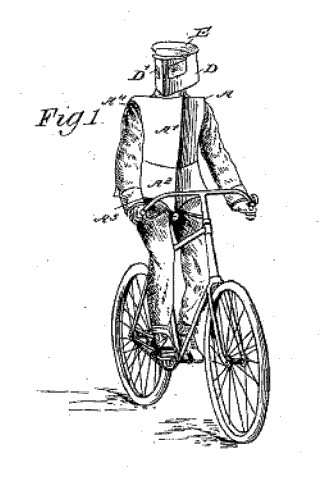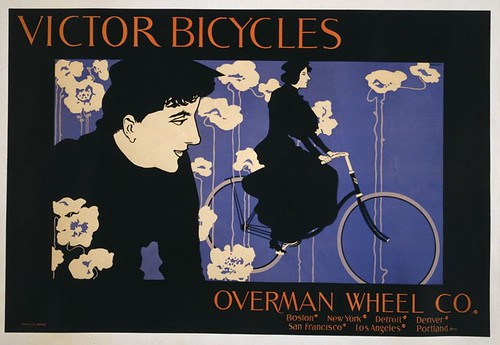Since I ride a bike more than a 100 miles a week on average, I think about bike safety a bit. Mostly I ride on bike paths or bike trails (or whatever they are properly called) although of course they are used by pedestrians, runners, etc - but not motor vehicles! And it is the motor vehicles that represent the significant safety problem for cyclists.
In the Seattle area, supposedly a very bike friendly region, two middle-aged cyclists were recently killed within a period of less than two weeks,
one by a truck that went onto the shoulder where the cyclist was riding and
another when an SUV made a left turn once oncoming car traffic had cleared, but not the oncoming cyclist. (In the second case, the driver got out, ascertained there was an accident, then drove away - hit and run.) Even though I read about cyclists getting killed all the time, for some reason these two events bother me.
At a conference recently (that had nothing to do with cycling) I heard a presentation by someone from
Kickstarter, an organization (well, it's a commmercial company, actually) that provides a vehicle for getting start-up funding for various kinds of endeavors through their web site. Many are small cultural projects but others are efforts to start sales of products of one sort or another.
As it happens,
Mr. Bikesnob NYC had a
recent blog entry about
a Kickstarter project for a bike turn signal system that is built into a left cycling glove. Kickstarter seeks solicitation primarily through videos; the "you turn" fundraiser video is below.
Mr. Bikesnob has lots of fun spoofing this Kickstarter video in various ways, although he leaves aside the main question I had (at first) which is whether the fellow is serious - the circuitry in the glove detects whether the cyclist points his hand up (for a right turn) or out to the left (for a left turn) and activates one of two LED arrows built into the glove. Yes, but . . . we inherited the "left hand straight up = right turn" thing from people driving cars (from when turn signals for cars were not always present!) and most cyclists now use their right arms to signal right turns. Since the left brake lever is for the front brake (also known as the brake that works best) I never signal right turns with my left hand - common sense dictates using my right hand to signal, stuck out to the right, and keeping my left hand on that brake lever. So if you wanted LED turn signals combined with gloves, it would be simplest to put a single arrow on each glove - assuming you think it makes sense to have such digital signals at all.
But I digress.
The real question I have is whether attempts to buttress cyclists' safety through developing new products to buy and use is a good approach. That it is an
American approach, that much is obvious, but is it going to make it safer for cyclists?
Frankly I'm doubtful. The two things I believe that are needed to improve the safety of people on bicycles (vis a vis cars, trucks, etc.) is more people on bicycles, which inevitably leads to a
lower accident rate for the cyclists; and, in tandem with that, a change in our transportation culture such that the
"complete streets" concept makes sense to more and more people.
Of course, common sense says that cyclists are safer when they are visible to motorists if they use roads. (And of course there are laws requiring reflectors, lights, etc. for certain conditions.) This product, however, seems to contribute more to making cyclists more car-like, which doesn't seem particularly helpful. An LED turn signal system for bicycles contributes mostly to making cycling seem more dangerous and more complicated than it should be. The more safety equipment we pile onto cyclists, the less appealing it becomes, thus defeating the "more cyclists = fewer accidents" strategy.
Kickstarter has another cycling funding project - a
bicycle brake light system.
It is suggested that having a brake light like a car's (that comes on when the brakes are applied) "has the potential to save many lives." As with the glove-signal system, it seems more to add to the complexity of cycling and to the impression that it is dangerous. Having a light or lights and a reflector to make a cyclist visible when it is dark and to take other measures to increase one's visibility to motorists makes good common sense but "I failed to realize the bicycle was stopping and therefore ran into it" isn't the problem I read about with cyclists hit by cars from the rear, it's the "I wasn't expecting a cyclist at that location, I didn't see him/her, and . . . " situations that are the problem. As the number of cyclists increases, the motorists get used to them, and expect to interact with them in their daily drives (and stop running into them so much). Also, eventually (a la Amsterdam) more and more drivers will be sometimes-cyclists, which can only help.
Now I'll get off my soapbox, such as it is. I'll put forth my thinking on bicycle helmets another time . . .
PS I asked a fellow from the Netherlands recently if he commuted by bike to work on Capitol Hill - his answer? "No, so many here talk about friends they know who got killed riding their bikes. No one in the Netherlands is ever killed riding their bike! It seems too dangerous."
